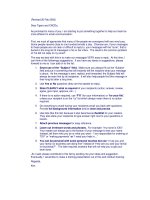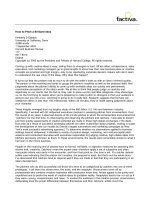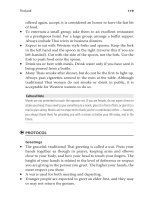Tài liệu How to Develop Better Human Relations pdf
Bạn đang xem bản rút gọn của tài liệu. Xem và tải ngay bản đầy đủ của tài liệu tại đây (86.14 KB, 1 trang )
Guide to Retaining Employees
High Performing Groups vs. Low Performing Groups
Back to Menu
high performing groups
informal
experimental
action-oriented
high cooperation
low defensiveness
high levels of trust
little second-guessing
few trappings of power
high respect for learning
few rules and high flexibility
low levels of anxiety and fear
empowering of team members
little discounting or disparaging
failures seen as problems to solve
decisions made at the action point
people easily cross organizational lines
many informal problem-solving meetings
people pick up and correct the errors of others
trouble puts people into "problem-solving" mode
willingness to take risks and learn from mistakes
rank is right
little risk taking
formal relationships
privileges and perks
many status symbols
rules rigidly enforced
slow action/great care
much protective paperwork
decision-making done at top
high levels of fear and anxiety
your problem is yours, not ours
well-defined chain of command
learning limited to formal training
many information-giving meetings
trouble puts people on the defensive
little problem-solving below top level
crossing organizational lines forbidden
need to bury mistakes or whitewash them
carefully formulated rules and regulations
complaints and discomforts go underground
low performing groups
Content Author/Owner: Lisa Stilwell-LF
Last Revised on 7/03/00 by Lisa Miller-LN
Retention Limit: Until Superseded
Copyright © 1999, Procter & Gamble, All rights reserved.









